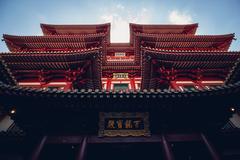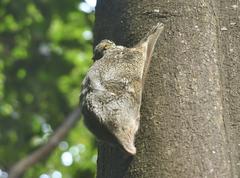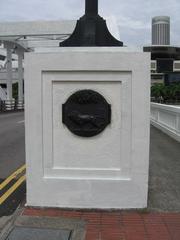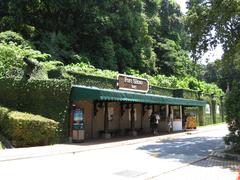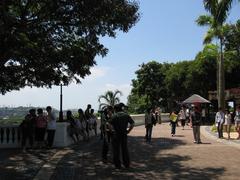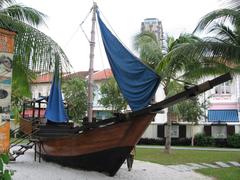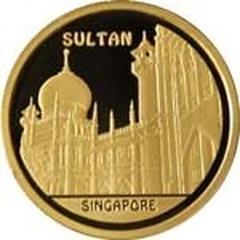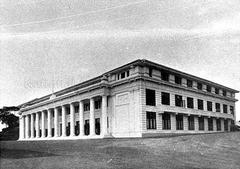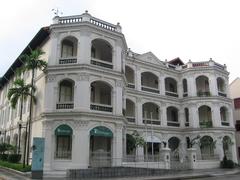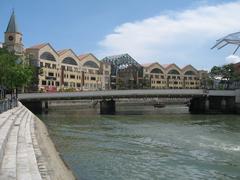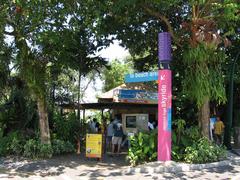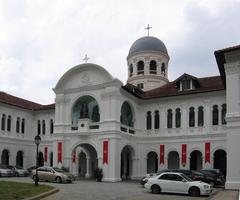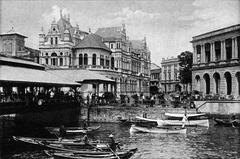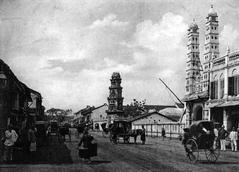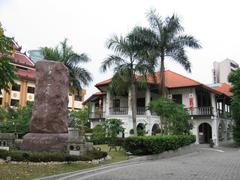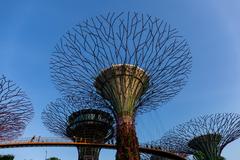
Nagore Durgha Singapore: Visiting Hours, Tickets, and Historical Significance
Date: 04/07/2025
Introduction
Located at the heart of Singapore’s historic Chinatown on Telok Ayer Street, Nagore Durgha stands as a vivid testament to the city-state’s Indian Muslim heritage. This unique shrine, built between 1828 and 1830 by Tamil Muslim immigrants known as the Chulias, honors Shahul Hamid, a revered Sufi saint from Nagore, Tamil Nadu, India. Today, Nagore Durgha is recognized as both a spiritual sanctuary and a national monument, welcoming visitors to experience its rich history, architectural splendor, and the enduring legacy of Singapore’s Indian Muslim community (Roots.sg; Touristlink).
Table of Contents
- Introduction
- Historical Background and Significance
- Architectural Features
- Visiting Information (Hours, Tickets, Accessibility)
- Visitor Etiquette and Facilities
- Nearby Attractions
- Events and Festivals
- FAQs
- Summary and Final Tips
- References
Historical Background and Significance
Origins
Nagore Durgha was constructed by the Chulias, Tamil Muslims from South India’s Coromandel Coast, between 1828 and 1830. The shrine was dedicated to Shahul Hamid, a Sufi saint known for his piety and spiritual influence in South India. Serving as a focal point for the early Indian Muslim diaspora, Nagore Durgha became a vital center for religious, social, and cultural gatherings, anchoring the community in a rapidly changing colonial port city (Roots.sg; Touristlink).
Cultural Role
Historically, the shrine provided a spiritual home for Indian Muslim traders, craftsmen, and moneychangers who settled in Singapore. It also played a role in fostering interfaith and multicultural engagement by existing alongside temples and mosques of other communities within the Telok Ayer district (Frommer’s).
Architectural Features
Nagore Durgha’s design is a striking blend of South Indian Islamic architecture and colonial European elements, symbolizing Singapore’s diverse heritage.
- Facade: The “miniature palace” facade features two flanking minaret-like towers, intricate plasterwork resembling lace, and arched entrances framed by classical columns.
- Minarets: Each corner of the building is marked by a 14-tiered minaret, topped with onion domes—a nod to the mosque architecture of the Coromandel Coast.
- Details: The building’s white plaster cutouts and fanlight windows are reminiscent of South Indian styling, while the overall symmetry and use of pilasters reference European influences (Frommer’s; National Library Board Singapore).
- Interior: Painted prayer halls, two shrines, and heritage gallery displays contribute to a vibrant, spiritually immersive environment.
Visiting Information
Address
140 Telok Ayer Street, Singapore 068604
Visiting Hours
- Monday to Friday: 10:00 AM – 5:30 PM
- Saturday: 9:00 AM – 1:00 PM
- Sundays and Public Holidays: Closed
Visiting hours may change during special events or festivals. Always check the official website before planning your visit.
Tickets and Admission
- Admission: Free for all visitors.
- Donations: Appreciated to support the shrine’s upkeep and community programs.
Accessibility
- Wheelchair accessible ground floor and main entrance.
- Some upper areas may have limited accessibility due to heritage preservation constraints.
Guided Tours
- Available by appointment via phone (+65 9838 0025) or official website.
- Included in some local heritage trails.
Visitor Etiquette and Facilities
- Dress Code: Modest attire recommended. Shoulders and knees should be covered; no revealing clothing.
- Footwear: Must be removed before entering prayer halls or sacred areas.
- Behavior: Speak quietly, refrain from eating/drinking in sacred areas, and respect ongoing prayers.
- Photography: Allowed in public/heritage gallery areas. Avoid flash photography and seek permission before photographing people or inside prayer halls.
- Facilities: Clean restrooms, heritage gallery with multimedia exhibits, and a halal dining area available.
- Language: English is widely spoken; Malay, Mandarin, and Tamil are also common.
- Wi-Fi: Not guaranteed; consider a local SIM if needed.
Nearby Attractions
Enhance your visit by exploring these nearby sites:
- Thian Hock Keng Temple: Singapore’s oldest Hokkien temple.
- Sri Mariamman Temple: The city’s oldest Hindu temple.
- Al-Abrar Mosque: A historic mosque for Indian Muslims.
- Buddha Tooth Relic Temple and Museum: Major Chinatown landmark.
- Singapore City Gallery: Insight into Singapore’s urban development.
(chinatown.sg; singaporetravelhub.com; trek.zone; wonderwall.sg)
Events and Festivals
- Annual Urs Festival: Commemorates Shahul Hamid’s death anniversary, featuring special prayers, cultural performances, and communal meals.
- Cultural Events: Includes exhibitions and community gatherings, particularly during heritage festivals.
- Spice Line Exhibition: Celebrated Singapore’s spice trade history with a display of 80 spices.
Check the official website for up-to-date event information.
Frequently Asked Questions (FAQ)
Q: What are Nagore Durgha’s visiting hours?
A: Monday to Friday, 10:00 AM – 5:30 PM; Saturday, 9:00 AM – 1:00 PM; closed on Sundays and public holidays.
Q: Is there an entrance fee or do I need tickets?
A: Admission is free; no tickets required.
Q: Is Nagore Durgha wheelchair accessible?
A: Yes, the ground floor and main entrance are accessible.
Q: Are guided tours available?
A: Yes, by appointment via phone or official website.
Q: Can I take photos inside?
A: Yes, in public areas. Seek permission for interior photography or photographing individuals.
Summary and Final Tips
Nagore Durgha is a vital part of Singapore’s multicultural heritage, offering visitors a tangible connection to the Indian Muslim community’s history and spiritual traditions. With its distinctive architecture, free entry, and central location, it is both accessible and rewarding for local and international visitors. Combine your visit with a walk through Chinatown or explore other nearby religious and cultural sites for a comprehensive experience.
For the best experience:
- Visit on weekday mornings to avoid crowds.
- Dress respectfully and observe shrine etiquette.
- Check the official website for the latest updates on visiting hours and events.
References
- Roots.sg: Former Nagore Dargah
- Touristlink: Nagore Durgha Singapore Overview
- Frommer’s: Nagore Durgha Shrine
- National Library Board Singapore
- Majlis Ugama Islam Singapura (MUIS)
- chinatown.sg
- singaporetravelhub.com
- trek.zone
- wonderwall.sg
- rachelirl.com
For more heritage guides and event updates, download the Audiala app and follow us on social media.







